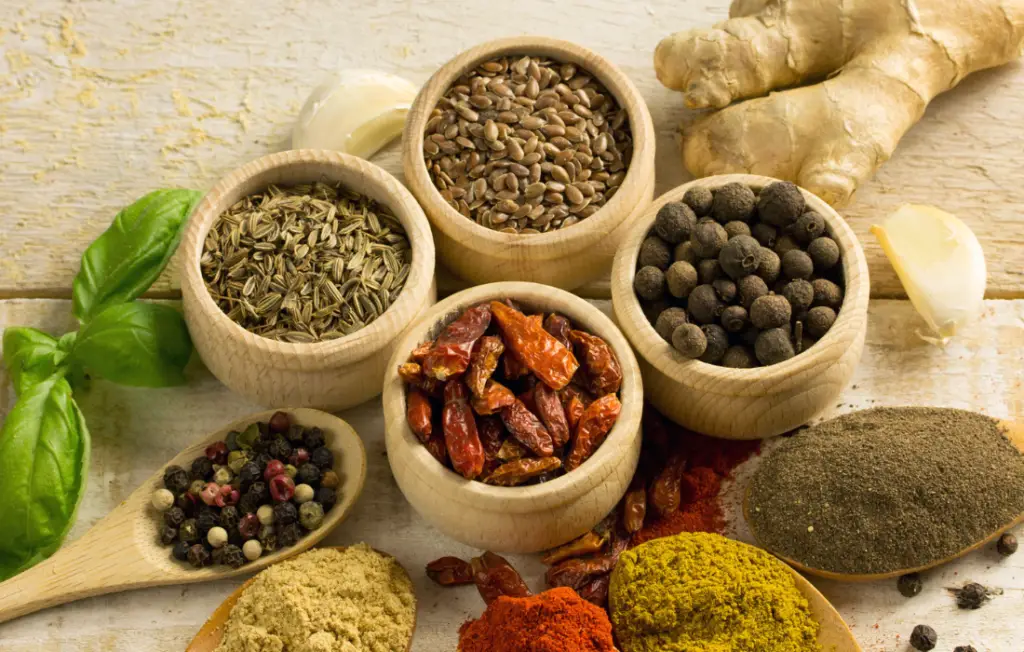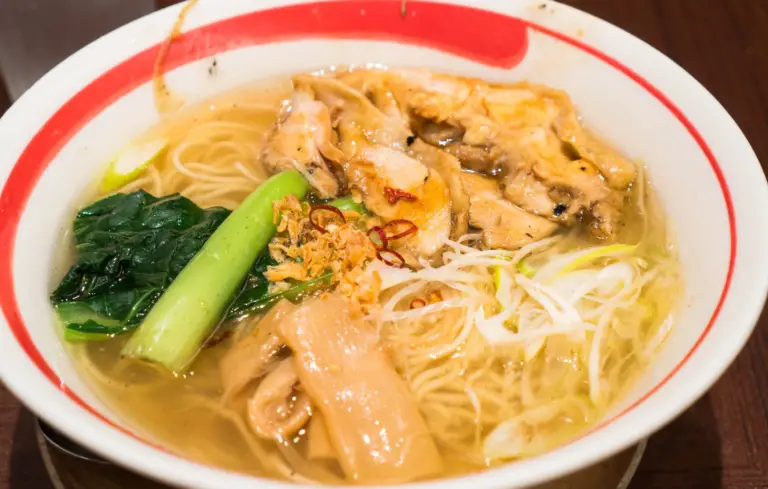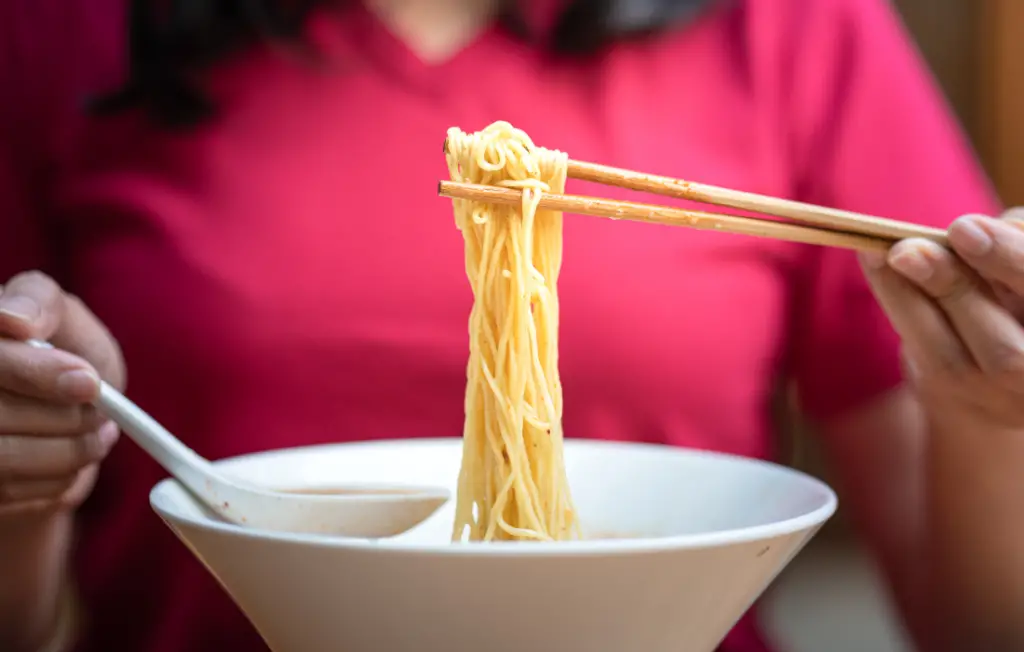As a dad to three adventurous foodies, I’ve seen how a bowl of ramen can magically wipe clean the stormiest of faces. Their love for this comforting noodle soup is incredible, especially when it’s spiced up a notch. So, how can you take this family-favorite roasted chicken ramen and give it a kick that’ll make everyone ask for seconds?
Start by preparing your ingredients: get your roasted chicken, ramen noodles, and your choice of vegetables ready. Next, sauté your spices (garlic, ginger, red pepper flakes for heat) in a pan before adding in your chicken broth. Let it simmer for about 20 minutes to let the flavors meld together, then add in your roasted chicken and noodles, cooking until done.
This article serves as a roadmap, guiding you through the aromatic world of spices to transform your homemade roasted chicken ramen. With expert insights, a DIY spice mix, and pairing tips, we’ll take a culinary journey that’ll not only ignite your taste buds but also broaden your cooking skills. Let’s toast to that and dive in!
- Understanding the Basics of Roasted Chicken Ramen
- What’s the best chicken for spicing up your ramen?
- The Art of Spicing Up Your Ramen
- DIY Spice Mix for Roasted Chicken Ramen
- Expert Insights on Ramen Spices
- “Toasty” Troubleshooting Tips
- Enhancing Your Ramen Experience
- Beverage Pairing
- FAQ Section
- Final Thoughts on Spicing Up Roasted Chicken Ramen
Understanding the Basics of Roasted Chicken Ramen
Roasted Chicken Ramen, at its core, is a delightful bowl of umami, offering a comforting blend of flavors and textures. Hailing from Japanese cuisine, it consists of wheat noodles served in a savory chicken broth, topped with slices of roasted chicken, and often garnished with a variety of additional ingredients for added complexity.

The key ingredients in traditional Roasted Chicken Ramen are:
- Ramen noodles: These are wheat-based noodles that are slightly springy in texture.
- Chicken broth: This forms the base of your ramen soup. It can be store-bought or homemade, with homemade often yielding a richer flavor.
- Roasted chicken: Chicken is roasted until it’s tender and juicy, then sliced and added to the ramen.
- Toppings: These can include a variety of ingredients, from soft-boiled eggs and green onions to seaweed, corn, and bamboo shoots.
- Spices: Garlic, ginger, and soy sauce are common. Other spices can be added based on personal preference.
Equipment needed:
- A large pot for cooking the ramen noodles and preparing the broth.
- A roasting pan or oven-safe skillet for roasting the chicken.
- A knife and cutting board for preparing your ingredients.
- Bowls for serving your finished ramen.
- Optional: A strainer for draining your noodles.
Understanding these basics will help you step up your ramen game, infusing your bowls with rich flavors that go beyond the typical instant packets.
What’s the best chicken for spicing up your ramen?
The best chicken for ramen tends to be bone-in, skin-on chicken. The bones and skin contribute greatly to the flavor and richness of the broth. Thighs and legs are especially good because they’re more flavorful and tender than chicken breast. However, if you prefer leaner meat, you can use skinless, boneless chicken breasts.

For roasted chicken specifically, using a whole chicken will provide you with a balance of different meat textures and flavors. Plus, you can use the carcass and giblets to further enhance your broth.
Remember, the quality of the chicken also matters. Organic, free-range chicken generally provides better flavor than conventional, mass-produced poultry. So, investing in good quality chicken will take your ramen to another level.
The Art of Spicing Up Your Ramen
Adding spice to your ramen is more than just a game of heat; it’s a nuanced art form that requires a keen sense of balance. Too much spice can overpower the dish, masking the subtle flavors of the broth and the umami-rich toppings. Conversely, too little can leave the dish feeling flat and uninspiring. The key is finding a harmony between heat, flavor, and the natural sweetness of the broth, to create a bowl of ramen that is comforting yet invigorating.
When it comes to commonly used spices in ramen, there are a few that truly define its distinct flavor profile:
- Garlic: A universal flavor booster, garlic adds depth and a robust quality to the broth.
- Ginger: Its unique, spicy-sweet flavor complements the richness of the chicken broth while helping to balance the heat from other spices.
- Soy Sauce: Adds a salty, umami flavor that’s integral to ramen. Dark soy sauce can also add color to the broth.
- Red Pepper Flakes: Great for adding heat, use them sparingly until you find your preferred level of spiciness.
- Sesame Oil: It gives a toasted, nutty flavor that complements the other spices beautifully.
- Chili Oil: For those who love an extra spicy kick, a few drops of chili oil can be used as a garnish.
Remember, spicing up your ramen is about enhancing and complementing the flavors, not overshadowing them. It’s a delightful journey of finding your own perfect blend.

DIY Spice Mix for Roasted Chicken Ramen
Alright folks, let’s get our hands a little dirty in the spice department. We’re about to prepare a homemade spice mix that will add that special “oomph” to your roasted chicken ramen. Forget the store-bought stuff; we’re going all-in with the real deal here. Follow these steps, and let’s get this spice party started!
- Collect Your Spices: You’ll need 2 tablespoons of garlic powder, 2 tablespoons of onion powder, 1 tablespoon of ground ginger, 2 teaspoons of crushed red pepper flakes, and 1 teaspoon of black pepper. Add some white sesame seeds if you’re feeling a little nutty.
- Mix it Up: In a small bowl, mix all the ingredients together. Remember, we’re going for a well-balanced mix, so make sure everything gets well incorporated. No clumping allowed!
- Taste Test: Give your mix a little taste. Not quite there? Feel free to adjust the quantities of your spices. Maybe add a pinch more red pepper flakes if you’re feeling brave, or perhaps a bit more ginger if you’re seeking a warm zing.
- Store it Right: Once you’re happy with your mix, transfer it to an airtight container. Store it in a cool, dark place, and it should stay fresh for up to six months. But let’s be honest – it probably won’t last that long once you taste your ramen!
There you have it – your very own homemade ramen spice mix. Trust me; once you’ve tried this, there’s no going back to those packet seasonings.

Spiced Up Roasted Chicken Ramen
This Spiced Up Roasted Chicken Ramen recipe gives a twist to the traditional ramen by incorporating a homemade spice mix, ensuring each bite is packed full of flavor. The warmth of the spices beautifully complements the richness of the roasted chicken, making it a comforting and satisfying meal.
- Total Time: 2 hours
- Yield: 4 servings 1x
Ingredients
- 1 whole chicken, preferably organic
- 4 packs of ramen noodles
- 8 cups of water
- 1 onion, chopped
- 2 carrots, chopped
- 3 cloves garlic, minced
- 2 tablespoons soy sauce
- 2 teaspoons sesame oil
- Salt to taste
Instructions
- 1 teaspoon chili flakes
- 1 teaspoon ground black pepper
- 1 teaspoon garlic powder
- 1 teaspoon onion powder
- 1/2 teaspoon ground ginger
Notes
Feel free to add more chili flakes if you prefer your ramen extra spicy. You can also add additional toppings such as boiled eggs, green onions, or bamboo shoots.
- Prep Time: 30 minutes
- Cook Time: 1.5 hours
- Category: Main Course
- Method: Roasting and Boiling
- Cuisine: Japanese Fusion
Keywords: Roasted Chicken Ramen, Spicy Ramen, Homemade Ramen, Spice Mix for Ramen, Comfort Food, Asian Fusion
Expert Insights on Ramen Spices
These insights from experts can guide you towards creating a bowl of ramen that not only warms your belly but also pleases your palate in every spoonful.
- Start with a quality base: According to many professional chefs, a quality broth is the heart of any good ramen. Choose fresh ingredients and take your time to allow the flavors to develop.
- Balanced Seasoning: Japanese food experts often emphasize balance in flavor. Start with small amounts of spice and adjust according to your taste, aiming for harmony between spicy, salty, and umami notes.
- Use Fresh Ingredients: Fresh garlic and ginger, as opposed to dried or powdered, will lend a brighter, more pronounced flavor to your ramen.
- Add Spices Early: Some chefs suggest adding spices early in the cooking process to allow them to meld with the broth, creating a deeper flavor profile.
- The Magic of Miso: A tip from Japanese chefs is to add a spoonful of miso paste to the broth for an added layer of umami.
- Finish with Fat: A tip from ramen chefs: finishing your bowl with a small dollop of fat (like a flavored oil or butter) can enhance richness and help distribute spice flavors evenly.
- Layer Your Spices: Add different spices at various cooking stages for a more complex flavor profile. Start with milder spices, adding the hotter ones towards the end to keep their punch.
- Quality Soy Sauce: Chefs recommend using high-quality soy sauce, which can add a depth of flavor without making the dish too salty.
- Toast Your Sesame Seeds: For those using sesame seeds, toasting them before adding can bring out their nutty flavor and add a pleasant crunch.
- Experiment with Seaweeds: Japanese experts often recommend adding a small piece of kombu (dried kelp) or a sprinkle of wakame to the broth, enhancing its umami qualities.

“Toasty” Troubleshooting Tips
No more trial-and-error, folks. Here are five toasty tips that’ll help you steer clear of ramen blunders and have you creating spiced-to-perfection bowls every time. Let’s keep those bowls fiery, not fiendish!
- Easy Does It: The temptation to load up your ramen with all the spices your pantry holds can be strong, but remember – restraint is your friend here. Start with a conservative amount of spice, then taste and adjust as needed.
- Know Your Heat: Not all spices are created equal when it comes to heat. Know what you’re dealing with, so you don’t turn your comforting bowl of ramen into a five-alarm fire.
- Texture Matters: If you’re finding your ramen a bit too fiery, adding some creamy elements like a soft-boiled egg or a swirl of coconut milk can help tone down the spice while adding a velvety texture to your broth.
- Spice As You Go: Instead of adding all your spices at once, try adding them at different stages of the cooking process. This allows each spice to fully express its flavor and gives you better control over the final taste.
- Play with Pairings: The spice in your ramen can be beautifully balanced by the right beverage or side dish. A glass of sweet iced tea or a side of pickled vegetables can offer a refreshing contrast to your spicy ramen.
So, go on and embrace the spice, my friends. With these tips in your arsenal, you’re all set to create ramen bowls that are the perfect balance of heat, flavor, and utter deliciousness!
Enhancing Your Ramen Experience
Creating an unforgettable ramen experience extends beyond just the broth and noodles. The toppings and beverage pairings play a significant role in enhancing the overall flavor profile, creating a dining experience that satisfies all your senses.
When it comes to adding toppings to spice up your ramen, the possibilities are endless. Here are some popular choices:
- Soft-Boiled Eggs: Cut in half and gently placed on top of your ramen, they add a creamy texture that contrasts with the spice.
- Green Onions: Thinly sliced, they provide a fresh, sharp flavor that cuts through the richness of the broth.
- Bamboo Shoots: They add a lovely crunch and a slightly sweet flavor.
- Seaweed: Provides a unique taste of the sea and is rich in umami.
- Corn: It gives a sweet pop of flavor that can help balance the heat.
- Sesame Seeds: Toasted and sprinkled on top, they lend a nutty flavor and a nice crunch.
- Chili Oil or Slices of Fresh Chili: For those who want an extra kick of spice.

Beverage Pairing
As for beverage pairings, choosing the right drink can help balance the spice and enhance the flavors of your spicy roasted chicken ramen. Some suggestions include:
- Cold Beer: The crispness and carbonation of a lager can help cut through the richness and spice of the ramen.
- Sake: This traditional Japanese rice wine pairs well with ramen, the subtle sweetness balancing the salty, spicy broth.
- Green Tea: The astringency and slight bitterness can be a nice contrast to the heat and umami of the ramen.
- For the wine lovers: A chilled, off-dry Riesling works well with spicy dishes, its sweetness balancing out the heat.
Remember, the goal is to create a ramen experience that excites your taste buds and leaves you wanting more. So don’t be afraid to experiment and find what works best for you.
FAQ Section
Let’s address some of the most commonly asked questions about ramen. I’ve thrown in some from the “People also asked” section from Google to ensure we’re tackling all your ramen curiosities.
What can I add to ramen to make it more filling?
Ramen can be transformed into a heartier meal by adding protein and vegetables. Tofu, chicken, or even thinly sliced beef are excellent choices for protein. Veggies like mushrooms, bok choy, and bean sprouts also add substance to your ramen. Don’t forget the classics like a soft-boiled egg or bamboo shoots. And, if you’re feeling adventurous, kimchi adds a spicy, tangy kick!
Can you put hot sauce in ramen?
Absolutely! If you love a bit of heat, adding hot sauce to your ramen is a great way to turn up the flavor dial. Sriracha, Gochujang, or any of your favorite hot sauces would work well. Just remember, add a little at a time – you can always add more if you need an extra kick.
How can I make instant ramen better?
Start by ditching the flavor packet and using your own broth. You could add fresh vegetables, proteins, or a soft-boiled egg. And of course, a sprinkle of our homemade spice mix wouldn’t go amiss!

Can I add cheese to my ramen?
Why not? Adding cheese to ramen can give it a creamy, indulgent twist. A slice of American cheese melted on top can add a comforting richness, or try a sprinkle of sharp cheddar. If you’re looking for a more traditional approach, try a spoonful of cottage cheese for a tangy contrast.
What beverages pair well with spicy ramen?
A cold beer, particularly a light lager, works wonderfully with spicy ramen. Sake, a traditional Japanese rice wine, also pairs nicely. For non-alcoholic options, consider a chilled green tea or even a sweet, refreshing lemonade.
I hope these answers have satisfied some of your ramen queries and inspired you to experiment more with your own bowls. Remember, the magic of ramen lies in its versatility – there’s no right or wrong way, just your way!
Final Thoughts on Spicing Up Roasted Chicken Ramen
Well, folks, we’ve travelled quite a path today on this spicy journey, haven’t we? From understanding our humble ramen’s beginnings to conjuring a homemade spice mix that would make any chef proud, it’s been quite the culinary adventure.
If there’s one thing I’ve learned from my many ramen escapades, it’s that spicing up a bowl of roasted chicken ramen isn’t just about the heat. It’s about exploring a world of flavors and finding a balance that dances on your taste buds. It’s about the journey of the dish, from a simple, comforting bowl of noodles to an epicurean delight bursting with character. And it’s about making that bowl uniquely yours.
So, my fellow ramen enthusiasts, I encourage you to embrace the spice, to play with the flavors, and to make each bowl an expression of your culinary creativity. Remember my words, “if it tastes good, it’s good!”. Let’s toast to many more ramen adventures, and may your bowls be forever toasty and roasted!



